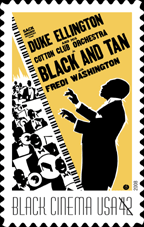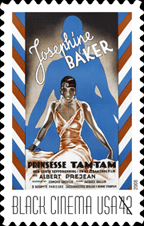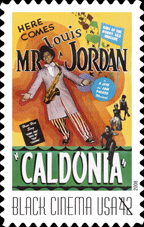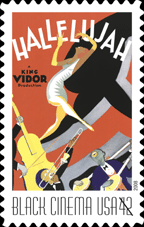 THE SPORT OF THE GODS
THE SPORT OF THE GODSReleased in 1921, the silent film The Sport of the Gods tells the story of a man who loyally serves a prison sentence for a crime committed by a friend. When his wife and children move from Virginia to New York City to escape disgrace, the demands of survival in their new northern home.tests their moral fiber.
The Reol Motion Picture Corporation produced The Sport of the Gods. The company survived only briefly, but it is sometimes credited with being one of the first companies to adapt literary works by African Americans for the silver screen.
The film was based on the 1902 novel of the same name by Paul Laurence Dunbar (1872-1906). At the turn of the 20th century, Dunbar was one of the most widely read American poets and one of the first popular African-American writers. The U.S. Postal Service honored on a 10-cent U.S. stamp in 1975.
BLACK AND TAN
 Released in 1929, the 19-minute film Black and Tan features Duke Ellington and his Cotton Club Orchestra. Ellington plays himself, but as an impoverished musician. When two bumbling movers arrive to repossess his piano, his girlfriend—actress Fredi Washington, also playing herself—manages to hold them off by offering them gin. Later, at the nightclub, an ailing Washington performs in an enthusiastic dance number despite her ill health. On her deathbed, she asks him to perform “Black and Tan Fantasy,” secure in the knowledge that she has helped Ellington continue to make music.
Released in 1929, the 19-minute film Black and Tan features Duke Ellington and his Cotton Club Orchestra. Ellington plays himself, but as an impoverished musician. When two bumbling movers arrive to repossess his piano, his girlfriend—actress Fredi Washington, also playing herself—manages to hold them off by offering them gin. Later, at the nightclub, an ailing Washington performs in an enthusiastic dance number despite her ill health. On her deathbed, she asks him to perform “Black and Tan Fantasy,” secure in the knowledge that she has helped Ellington continue to make music. PR INCESS TAM-TAM
PR INCESS TAM-TAMReleased in France in 1935 and later in the United States, the French-produced Princess Tam-Tam was one of only four movi es to feature an acting performance by American-born entertainer Josephine Baker.
Filmed in France and Tunisia, Princess Tam-Tam tells the story of a famous novelist, played by French actor Albert Prejean, who travels to Africa after an argument with his socialite wife. While attempting to overcome writer’s block, he is charmed by a simple African woman, played by Baker. He subsequently presents her as a princess to Parisian society in an attempt to arouse the jealousy of his wife, while also hoping to use the resulting story as the plot for his next book.
Princess Tam-Tam featured Baker’s exuberant dancing and her performances of two songs. Although the French-language film was little known in the U.S. at the time, it is now considered a rare film-length showcase for Baker’s talents.
 CALDONIA
CALDONIAReleased in 1945, the 18-minute film Caldonia showcased the talents of singer, saxophonist, and bandleader Louis Jordan (1908-1975). In Caldonia, Jordan, playing himself, is lured to New York by Felix Paradise, who promises him a film career. In the process, Jordan loses a promising Hollywood contract and Caldonia, his girlfriend. Jordan is also remembered as one of the first Black recording artists to achieve “crossover” appeal with White audiences
 HALLELUJAH
HALLELUJAHReleased by MGM in 1929, Hallelujah was one of the first films from a major studio to feature an all-Black cast. Hallelujah starred Daniel L. Haynes as Zeke, a field laborer who is seduced away from his family and community by the temptations of the world. Producer-director King Vidor hoped to create an authentic portrayal of rural African-American life, especially religious experience, by filming on location in Arkansas and Tennessee despite the technical challenges involved in doing so.
Enhanced by spirituals performed by the Dixie Jubilee Singers, Hallelujah also starred blues singer Victoria Spivey as Zeke’s hometown love interest and Nina Mae McKinney as the city woman who cons and seduces him. Later billed in Europe as “The Black Garbo,” the 16-year-old McKinney performs the Irving Berlin song “Swanee Shuffle” in Hallelujah.
Although not free of stereotypes, W.E.B. DuBois praised the movie in the October 1929 issue of The Crisis. He wrote that the film offered “the sense of real life” and concluded that “everybody should see Hallelujah.” King Vidor received an Academy Award nomination for Best Director for Hallelujah. He would later direct the black-and-white scenes in The Wizard of Oz as well as the 1956 film War and Peace.





